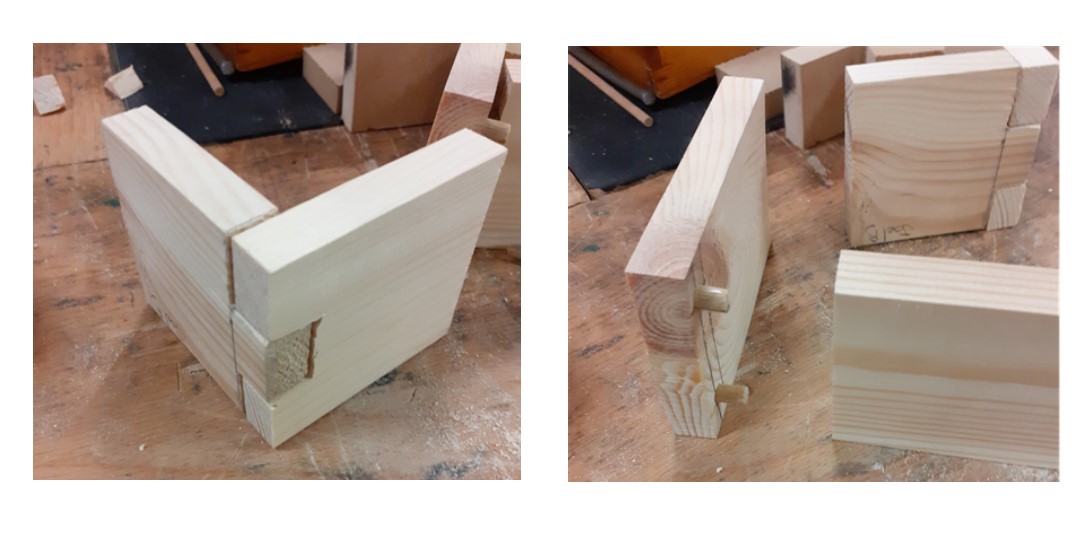New Designers Exhibition
On Friday 5th July, Year 10 GCSE and Year 12 IB Design Technology students embarked on an exciting journey to the Business Design Centre in Islington for the annual New Designers Exhibition. This event showcased the innovative work of newly graduated degree students across a wide range of design disciplines, offering our students a unique opportunity to witness the cutting edge of design first hand. The show offered a glimpse into the future of design. What made the experience truly exceptional was the chance for our students to engage directly with these emerging designers. They eagerly asked questions about the designers' creative processes, from the initial concept to the final product, gaining valuable insights into the design journey. This immersive experience not only broadened our students' perspectives but also ignited their passion for design, providing them with fresh ideas and motivation for their own GCSE/IB coursework.
Mrs T Papp, Design Technology Department
The Exhibition Through Student Eyes
As part of our Year 10 DT trip, we went to the Business Design Centre in Islington to see the Designers’ Exhibition, where we got the opportunity to see many new and innovative products, and even talk to some of the designers. We are currently in the process of developing our NEA (Non-Examination Assessment), so this was also an opportunity to take inspiration from these designs and help us with creating our own.
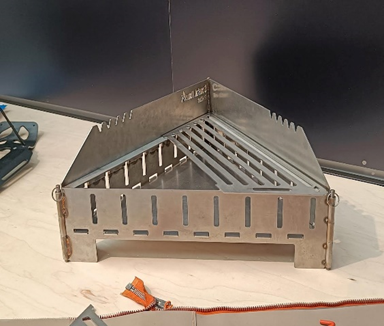 One of the first pieces that we saw was a portable, flat-pack grill for camping, where we got to speak with the designer and discuss his design process; he told us about his research into existing, portable grills and his dislikes with them, his initial design ideas, and even the history of grills and BBQs. His process was very similar to what we are currently doing in our NEA, and our conversation helped
One of the first pieces that we saw was a portable, flat-pack grill for camping, where we got to speak with the designer and discuss his design process; he told us about his research into existing, portable grills and his dislikes with them, his initial design ideas, and even the history of grills and BBQs. His process was very similar to what we are currently doing in our NEA, and our conversation helped 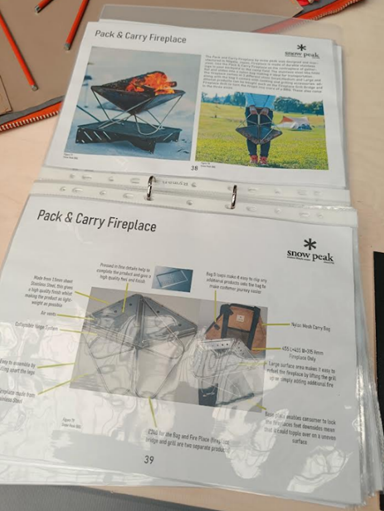 give us some ideas and inspiration about what our own products could be, especially as, for some of us, our chosen theme for the NEA is ‘eating away from home’. We particularly liked how the bag was designed to keep the parts of the grill separate and clean, with a smooth, silicone-like material inside to prevent stains.
give us some ideas and inspiration about what our own products could be, especially as, for some of us, our chosen theme for the NEA is ‘eating away from home’. We particularly liked how the bag was designed to keep the parts of the grill separate and clean, with a smooth, silicone-like material inside to prevent stains.
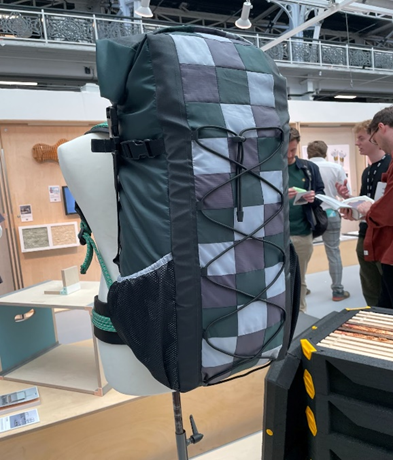 Another great design we saw was a camping bag. It was a good example of containers for our brief ‘Eating away from home’, and was very versatile. It could be collapsed into a small rucksack for things where you only need a packed lunch or something, or could be expanded to become a bag for larger things such as a sleeping bag or a tent. It was good to see that as a part of eating away from home counts as camping, and so allowed for some extra thought to that area.
Another great design we saw was a camping bag. It was a good example of containers for our brief ‘Eating away from home’, and was very versatile. It could be collapsed into a small rucksack for things where you only need a packed lunch or something, or could be expanded to become a bag for larger things such as a sleeping bag or a tent. It was good to see that as a part of eating away from home counts as camping, and so allowed for some extra thought to that area.
INCLUSIVE DESIGN
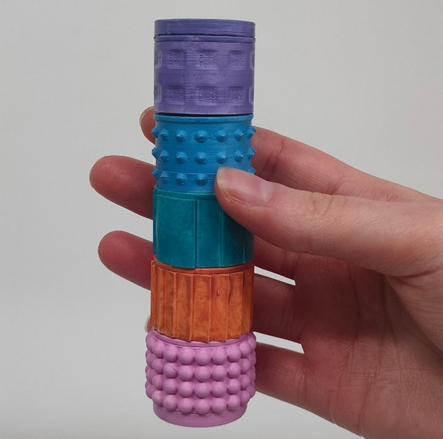 We also came across a design called Footer by Rebecca Brown, which is a sensory kit aimed at neurodivergent individuals to help reduce stress and anxiety. The designer sought to support people with stress, depression, autism, and ADHD by encouraging safe stimming behaviours. The sensory kit is customisable, can spin, and includes various sensory textures. It's also portable, allowing those with anxiety or stress to have something to fiddle with on the go, and really inspired us as another theme some people chose for our NEA was “Educational toys and games”, and helped us consider fidget toys as a possible design.
We also came across a design called Footer by Rebecca Brown, which is a sensory kit aimed at neurodivergent individuals to help reduce stress and anxiety. The designer sought to support people with stress, depression, autism, and ADHD by encouraging safe stimming behaviours. The sensory kit is customisable, can spin, and includes various sensory textures. It's also portable, allowing those with anxiety or stress to have something to fiddle with on the go, and really inspired us as another theme some people chose for our NEA was “Educational toys and games”, and helped us consider fidget toys as a possible design.
 There were so many other amazing designs that we saw that couldn’t fit into this article, but overall, we all really enjoyed this experience, as we got the opportunity to see so many creative and unique designs to take inspiration from, and talked to a lot of aspiring designers who gave us some amazing advice for when we will also be designing our own products. It was really inspiring to see these designers talk about their creations with true passion for their work, and we would really like to visit another one of these exhibitions in our own time in the future.
There were so many other amazing designs that we saw that couldn’t fit into this article, but overall, we all really enjoyed this experience, as we got the opportunity to see so many creative and unique designs to take inspiration from, and talked to a lot of aspiring designers who gave us some amazing advice for when we will also be designing our own products. It was really inspiring to see these designers talk about their creations with true passion for their work, and we would really like to visit another one of these exhibitions in our own time in the future.
Lucy, Alex, Elin & Jessica

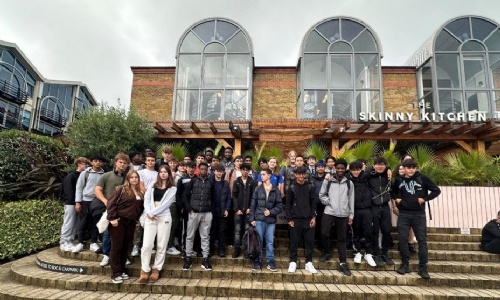
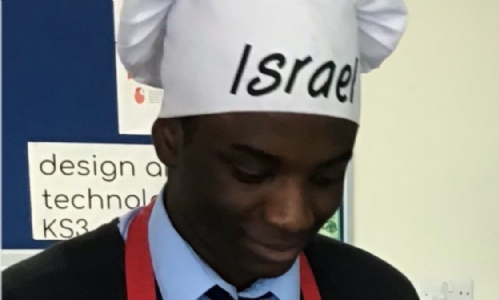

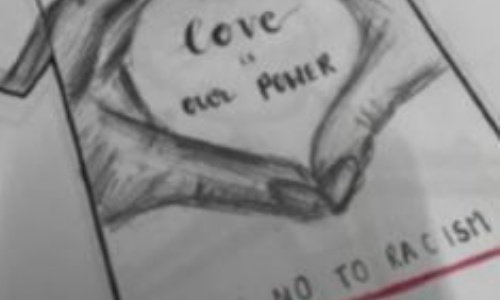
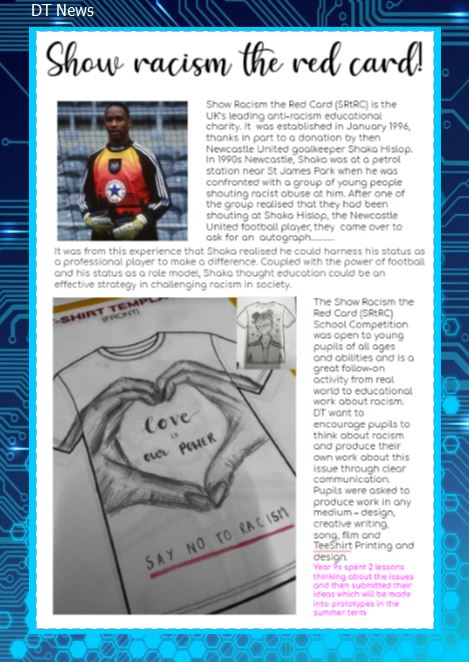
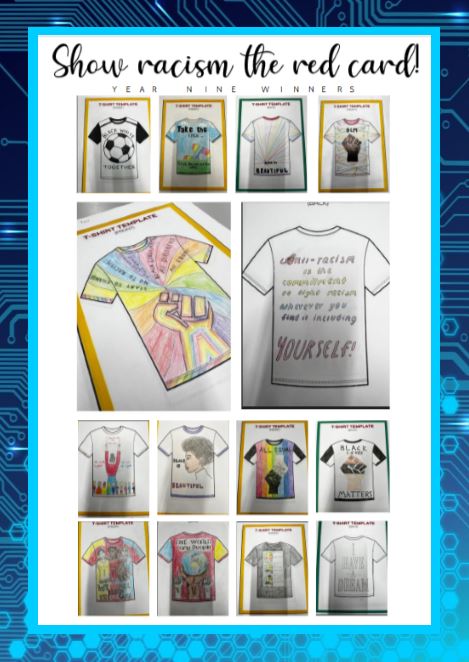
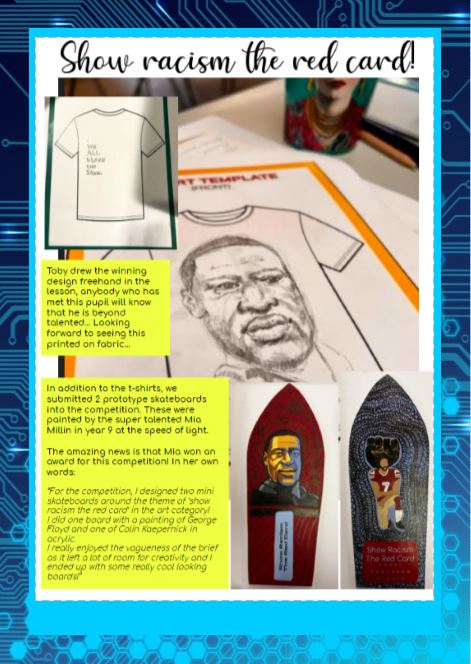
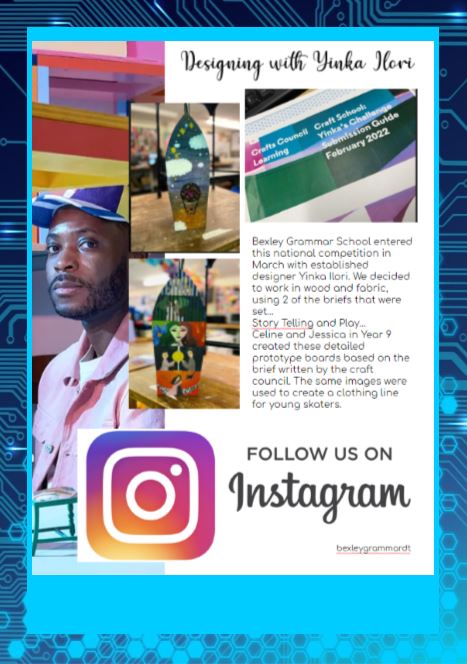
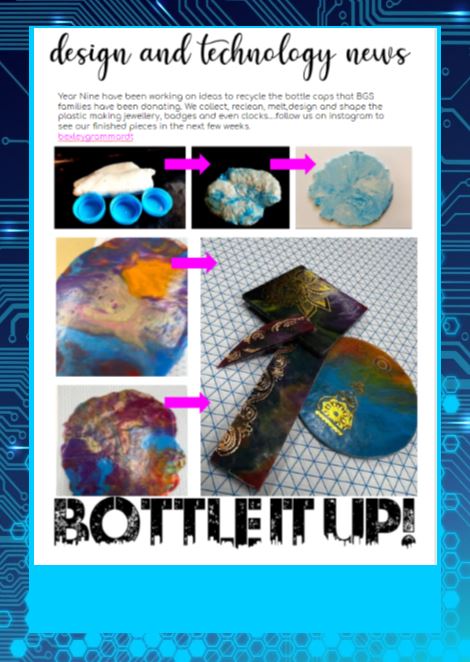
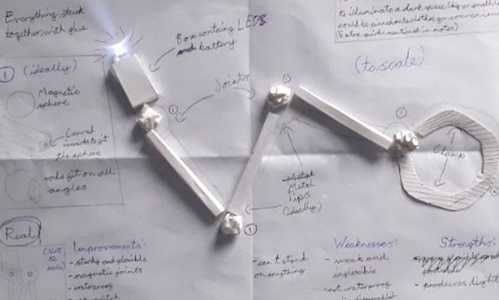

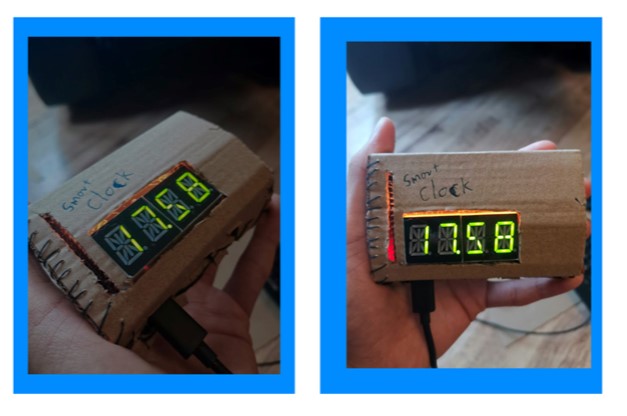
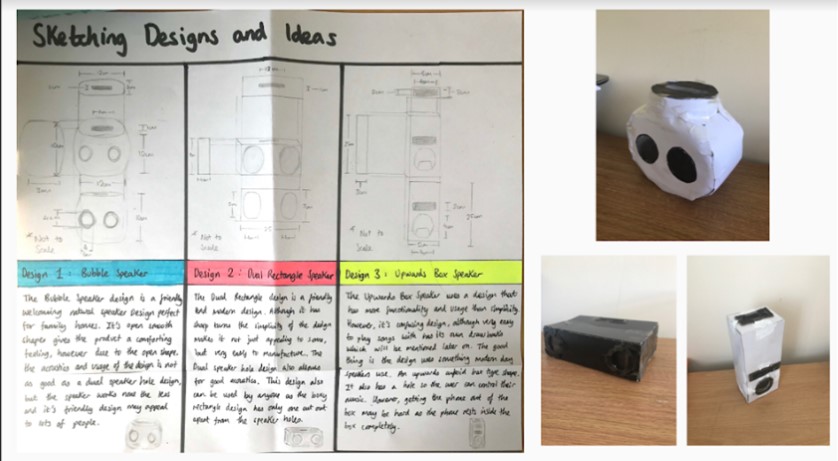
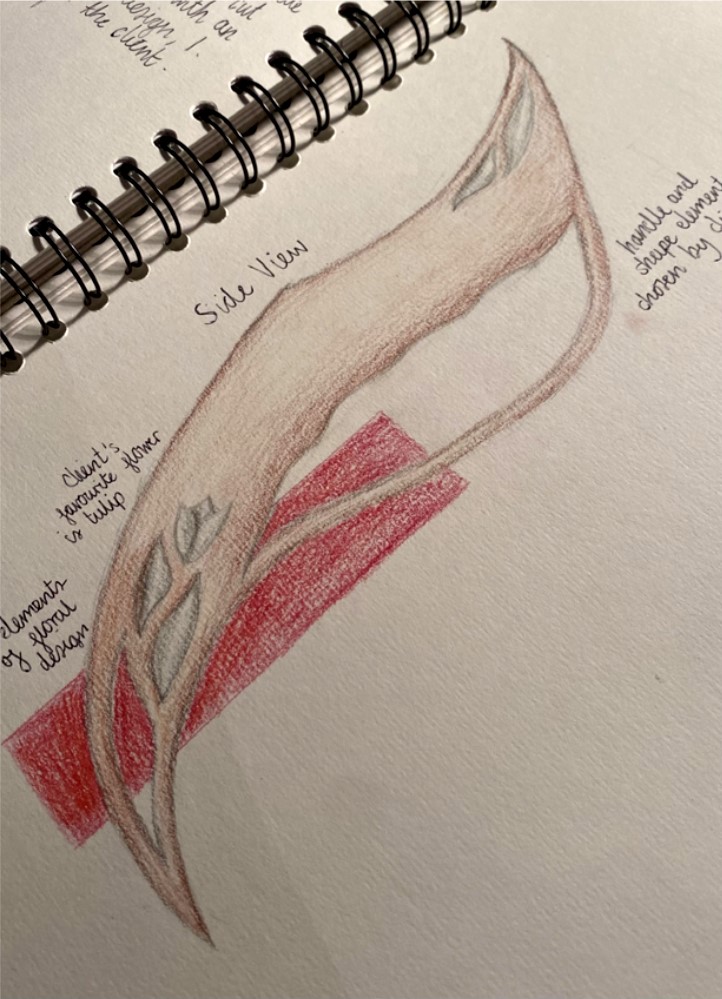
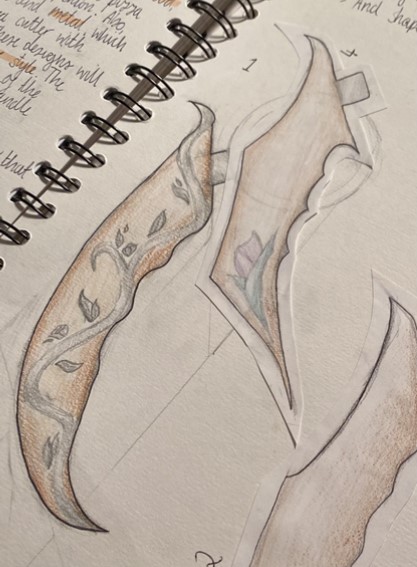
 Once we returned to school after Easter, I wanted to give the students the much-needed access to tools and machinery in the workshop, to allow them to develop their practical skills as well as knowledge and understanding of those processes. We started by spending time cutting and finishing timbers, one of the students key material groups within the GCSE specification. They enjoyed this immensely as they were allowed to use a number of different tools and machines to create a set of different traditional wood joints. This type of work requires precision and accuracy to create successful joints. The application of knowledge and skills will underpin and support both their practical work and exam revision in Year 11.
Once we returned to school after Easter, I wanted to give the students the much-needed access to tools and machinery in the workshop, to allow them to develop their practical skills as well as knowledge and understanding of those processes. We started by spending time cutting and finishing timbers, one of the students key material groups within the GCSE specification. They enjoyed this immensely as they were allowed to use a number of different tools and machines to create a set of different traditional wood joints. This type of work requires precision and accuracy to create successful joints. The application of knowledge and skills will underpin and support both their practical work and exam revision in Year 11.